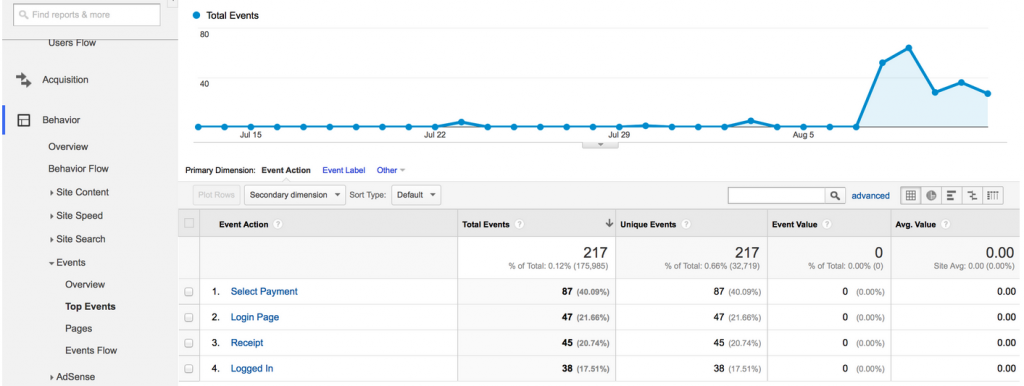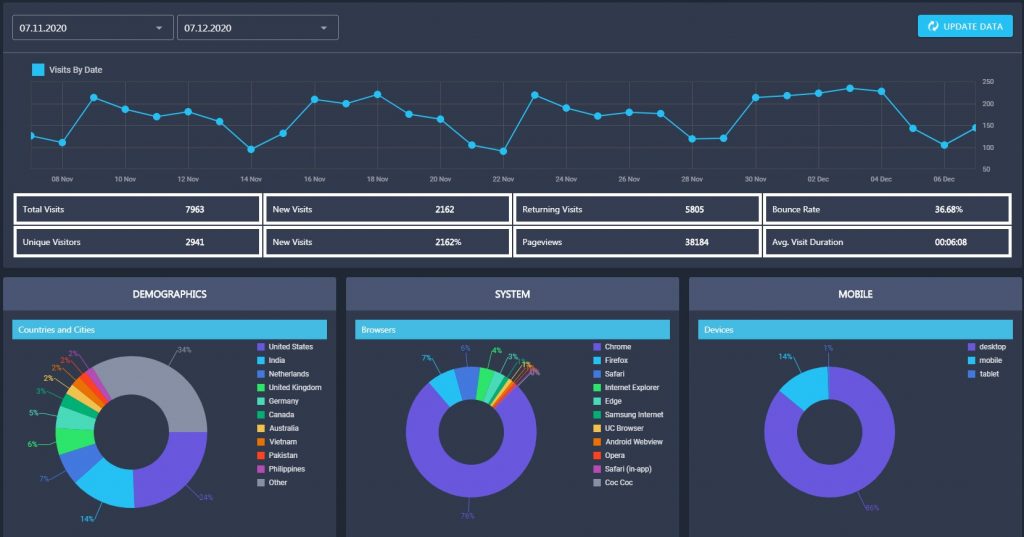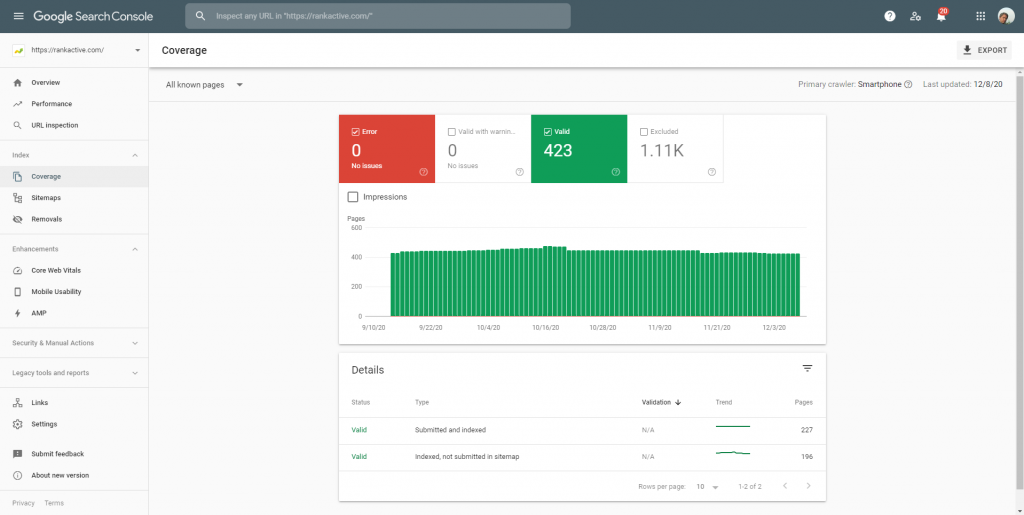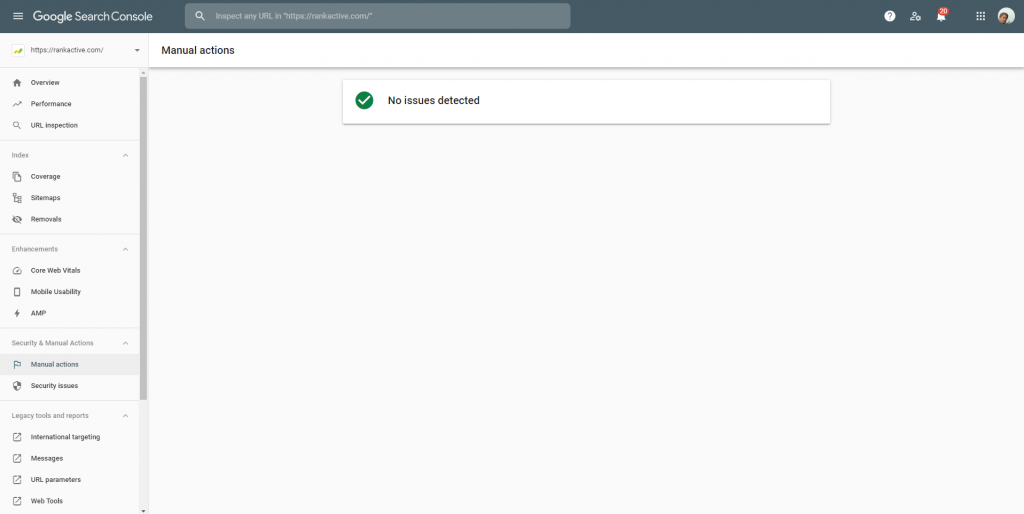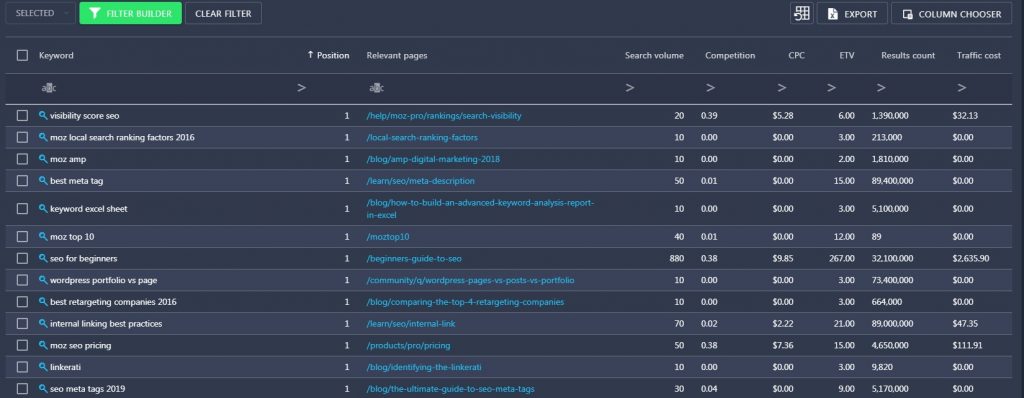How to Get Out of Google Sandbox and Do It Quickly?
9 December 2020 Leave a comment ALL-HANDS SEO
Google Sandbox is like a demon-possessed thing from a Stephen King novel. It sucks new websites in and keeps them in a fixed position for several months, not letting them move and breathe. No matter what you do and how hard you try, there is no way you can improve your rankings while your website is trapped in the mouth of this voracious monster.
It seems all you’re left with is waiting until the thing gets bored and shows mercy. However, we believe it’s possible to speed up your website’s release.
In this blog post, we’ll share some details about Google Sandbox. We’ll discuss what this thing is, when it appeared, and most importantly, what you can do to get out.
What is Google Sandbox
Sandbox is Google’s precautionary measure to prevent recently created websites from showing up high in search results. Even though the search engine representatives deny its existence, new websites fail to rank high in SERP. And the probable cause of this is Google Sandbox.
It’s unclear why Google uses it. Some experts think the search engine needs time to check if a website is spammy or not. Others believe it takes a while for Google to understand what a website is about and collect the information needed to rank it. Yet, no one can tell how long Google Sandbox lasts.
But it doesn’t matter.
The only thing that matters is that the sandbox period is a pain in the neck for anyone who wants to rank high without having to wait for months. And what’s interesting, this phenomenon was first mentioned a pretty long time ago.
When did the sandbox effect appear?
The sandbox effect became well-known back in 2004. At that time, SEOs first noticed that it was impossible to rank new websites high. Even using low search volume keywords didn’t give any fruits – their positions were far below desirable.
What also drew their attention was the fact that it was happening with Google Search only. Bing and Yahoo ranked new websites high from the very beginning.
More than 16 years have passed, but nothing has changed since. Google still puts new websites to Sandbox and keeps them there for several months. And if you’re reading this, you’re probably got trapped yourself.
Or are you not sure?
Fortunately, there is an easy way to check it.
How to spot if your website is in the sandbox?
There are no Google Sandbox checker tools. However, you can use Analytics to find out if your site was (or still is) in the sandbox.
Look at the screenshot above. If you’ve noticed a similar massive increase in traffic after a long period of low activity, that probably means your website was in the sandbox before. However, it’s not always the case.
There’s also another phenomenon connected with Google Sandbox. It’s called the honeymoon period. The honeymoon is when a new website gets a splash of traffic from Google because the search engine checks how users interact with it. After that, the site loses its rankings for some time again, and then traffic and rankings start to rise the natural way.
To check if your website is in Google Sandbox, you can also use RankActive’s Website Analytics tool. It will show you the number of visitors you had on each day of the month. By analyzing traffic spikes and drops and correlating them with ranking dynamics, you can easily determine whether your website was, or still is, in the Sandbox without switching back and forth between different tools.
Our tool will show you where your visitors come from, what browsers they use, what type of devices they open your site on, and other crucial information. That way, you’ll get a clear picture of who your visitors are and will be able to make your website a better place for them.
Even if you’ve already gone through the sandbox period, it’s still useful to check your traffic data from time to time. As we discovered, even old domains can get sucked into the quicksands of Google Sandbox.
Can an old website go in the sandbox?
As we mentioned above, the sandbox is the search engine’s precautionary measure applied to new websites. However, that was not entirely correct. Even if you have an aged domain, it can still end up in Google Sandbox in some cases: for example, after a long period of inactivity.
If you stop optimizing your website for a while and then continue your SEO efforts, there is a chance you will go straight to the sandbox. That already happened to some webmasters.
As you can see, Katherine has bought a domain that was inactive for about four years. When she checked it for indexation, she discovered that only the homepage was indexed while other pages didn’t appear in search results. She assumed Google sandboxed her new website. And that was not far from the truth.
You see, Google starts treating older sites as new if they have been inactive for too long. Also, when you’re reoptimizing content for new keywords (or changing the original niche), Google takes away the SEO authority a domain previously gained to prevent ranking manipulations. That means that even an old site may end up in the sandbox if you decide to redesign it completely.
However, all of this is just a theory. There is no official info from Google and no studies on this topic, so it’s impossible to prove anything described above. While you decide to believe it or not, we will show you six ways to get out of Google Sandbox.
6 ways to stop Google Sandbox from affecting your SEO efforts
What to do if you are in Google Sandbox? There are at least six ways to escape:
1. Index your website
You probably think that it’s the most obvious thing to do. However, you may not know that websites start aging only after Google’s indexation. So don’t lose your time and find a way to index your website faster. That way, you will go to the sandbox quicker and will get out of it sooner as a result.
To check if your website is indexed, you can use our Rank Tracker tool. Add your website to projects and go to the “Ranking overview” section to see how many indexed pages it has.
Or you can use the Search Console for this. It can even show you the exact date when the indexation took place.
2. Make sure you have no penalties
As you may already know, there are two types of penalties: manual and algorithmic. The difference between them is that manual penalties are applied by Google employees, while crawlers employ the algorithmic ones.
If you just bought a new domain and noticed that your new website’s positions don’t change no matter what you do, check the website for penalties.
Manual penalties are much easier to find, so let’s start with them. Open your Search Console account and go to the “Manual actions” section.
If you have a manual penalty, you will find a message from Google. It will explain why your website got penalized and what you can do to recover. Follow the steps described in the message and submit a reconsideration request once you’re done.
As for algorithmic penalties, they come without notifications. To spot them, check the date when your traffic dropped and compare it with the date when the latest Google update occurred. If the dates match, you’re probably dealing with an algorithmic penalty. Learn what the latest update is about and improve your site accordingly. After that, wait for the search engine to recrawl your website and remove the penalty.
3. Focus on content
Why do some websites get out of Google Sandbox within a month while others stay there for much longer? The probable reason lies in content. It’s believed the more content you produce, the faster you’ll shake off the shackles of Google Sandbox. But don’t chase the quantity; focus on quality instead. This strategy will give you more in the long run.
Here’s a list of tips for creating SEO-friendly content:
- Do keyword research. Figure out your seed keywords first and then expand the list with additional ideas. You can copy terms from Google’s suggestions and the related searches section, but it will take too long. To find the ideas automatically, try RankActive’s Keyword Finder tool. It will provide you with hundreds of keyword variations for your seed terms. You can then export them for later use.
- Avoid keyword stuffing. There was a time when you could write meaningless articles and stuff them with tons of keywords to manipulate rankings. Now you’ll end up with a penalty if you do this. Remember: your content is not a Thanksgiving turkey, so don’t stuff it with every keyword you find on a specific topic. Choose the most relevant terms instead and place them in your text. Write meaningful content for people, and search engines will like it as well.
- Prepare some long-reads. A study conducted by SerpIQ revealed that content length has a connection with website positions. The higher a website ranks, the longer content it usually has: for example, TOP1 websites have 2416 words on average. But note that longer content doesn’t rank higher just because it’s long — it usually ranks higher because it’s meaningful, engaging, and useful.
4. Build backlinks step-by-step
You’ve probably heard it a million times, but backlinks is one of the most crucial ranking factors. By building a strong backlink profile, you will show Google that your website is a trusted source of information and many people find it helpful. While it’s unclear if backlinks help get out of Google Sandbox faster, they can definitely be a good use when it comes to rankings.
Build backlinks step-by-step because it’s unnatural when a new website gains lots of backlinks immediately after launch. It makes Google suspicious, and it may even penalize your website so that you will stay in the sandbox even longer.
New backlinks should appear proportionally to the growth of your website content. You should be smart about your link velocity and never buy tons of cheap links on questionable sites.
5. Buy an already active website
This tip won’t help you get out of Google Sandbox, but it will help not to get there in the first place. If you don’t want to wait months for Google to start ranking your website properly, you can buy an already active website and skip the unpleasant part.
However, you need to be careful when buying websites. As we mentioned before, you should check if your new purchase has any penalties (and it’s better to do it before buying). Also, make sure the domain was active recently as there is no point in buying sandboxed websites.
As we mentioned before, even an old site may end up in the sandbox if you redesign it completely. That’s why you should try to find a website in your niche — the one that can be used immediately with no heavy modifications.
After the purchase, analyze your new website and discover what keywords it’s already ranking for. That way, you won’t accidentally remove them and damage the site’s current positions when optimizing it. Fortunately, we have an SEO tool that can help you find ranking keywords for any domain. It’s called Opportunities.
Just add your domain to projects and visit the Opportunities section to find all the ranking keywords.
You can then add these terms to the rank tracker tool and start monitoring your website’s positions for them. That will enable you to understand which SEO strategies work best and implement them to rank higher.
6. Drive traffic from social media
Not only search engines can bring visitors to your website. While you’re in Google Sandbox, you can rely on other sources of traffic, like social media. By driving traffic from Facebook, Twitter, Instagram, LinkedIn, and other social platforms, you will show Google that your website is interesting to people. That may help get out of the sandbox sooner.
Even though social signals don’t impact rankings, they’re still useful as they increase your website’s visibility and may bring you a decent amount of traffic. That’s why you should consider increasing social shares.
To drive visitors from social media platforms, follow these simple steps:
- add sharing buttons to every blog post you create;
- create social media groups and publish your content there;
- post daily to keep your brand at the top of social news feeds;
- write posts on viral topics;
- add CTA at the end of each post asking readers to share your content.
And most importantly, focus on the quality of your content, and social shares won’t take long to come.
Google Sandbox won’t last forever
Google has strict rules regarding new websites. The sandbox is its peculiar way to check if a website fits the latest algorithm updates and understand what it is about. While this effect is most certainly unpleasant, it won’t last forever.
It’s up to you what to do about it. You can either stay and watch or try to do something to get out of the sandbox sooner. If you prefer the second option, try this:
- index your website and check it for penalties;
- produce more high-quality content and gain backlinks proportionally to its growth;
- buy an already active website to skip the Google Sandbox period;
- gain visitors from social media platforms while you can’t rely on organic traffic.
Remember that even old domains may get sucked into the sandbox, so you better never stop your SEO efforts. To make your optimization routine more comfortable and productive, try RankActive’s tools. We offer a 14-day free trial, so don’t hesitate and create your account now.
Tags: content, Google Analytics, Google Sandbox, Keyword Finder, Keyword Opportunities, on-site SEO, RankActive, Search Console, website analytics
Like this article? There’s more where that came from.
- 5 Questions to Ask Yourself Before Paying for Rank Tracking Software
- 5 Serious Mistakes Beginner SEOs Make and How to Fix Them
- Why We Use Google’s New Link Attributes and You Should Too
- Title and Description in 2021: Why Google Rewrites SEOs’ Meta Tags
- What We Should Learn From Google’s “About This Result” Feature


